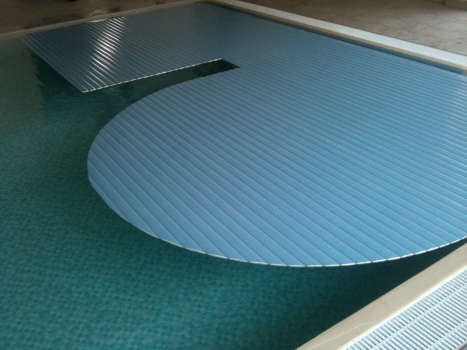While you can combat harsh sunshine and its ill-effect by installing translucent Danpalon polycarbonate sheets over your indoor swimming pool, it is inevitable to avoid stains that these sheets may get in the form of molds and mildew buildups due to humidity. For indoor pool covers, it is not very uncommon to form molds, but the important part is to clean them time to time for the sake of hygiene. Use given below process to remove the stains on indoor pool covers:
Step 1: Wet the roof with hose spray from ground. Don’t forget to wear paint goggles, long sleeves, full pants and rubber-sole shoes for grip.
Step 2: Make a mixture of bleach and water in equal quality. To make a complete cleaning solution add one cup of liquid laundry detergent to the mixture. If you have an option, you can also mix a cup of Trisodium Phosphate in 1 gallon of chlorine or pool shock and then in 4 gallons of water.
Step 3: Fill this solution into spray pump then climb on ladder and spray the solution with low pressure. The solution should cover entire roof, then leave it soak for 10 minutes.
Step 4: After soaking the rooftop, rinse the entire chemical by spraying water with garden hose. Excessive water force is not needed. Let the moulds run off the roof for some time until you see clean water rolling down from there.
When cleaning the indoor pool covers, make sure you wear safety outfits and remove planted pots and other things kept under the roof to avoid any damage.

